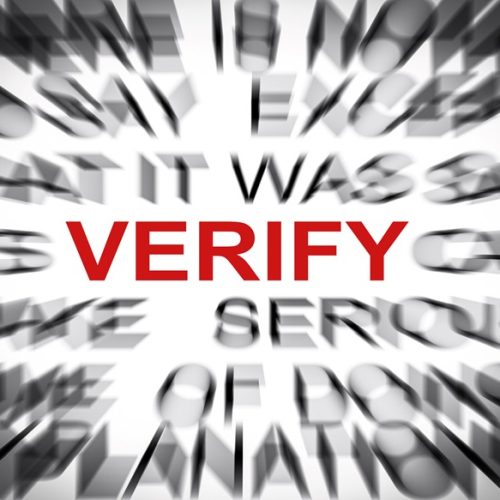

You may need to submit tax returns for someone who has died. As the personal representative, you are legally responsible for reporting income earned before and after death.
This person, known as the ‘personal representative’, is legally responsible for dealing with the deceased’s money, property and possessions. This includes reporting income earned both before death and income generated by the estate afterwards.
HMRC will inform the personal representative if self-assessment return is needed for the deceased. If so, they will send the necessary forms. To complete the return, the personal representative will need financial details such as:
The tax return must be sent by post to meet the deadline provided in HMRC’s letter. The personal representative can also appoint an accountant or other professional to assist in compiling the tax return.
If the estate continues to generate income (e.g., from rent or investments), the personal representative may also need to:

You must tell HMRC if you no longer need to file a tax return. Whether you have stopped trading or no longer rent out property, notifying HMRC early avoids penalties and keeps your records up to date.
If your circumstances have changed and you believe you no longer need to complete a self-assessment tax return, then it is important to notify HMRC as soon as possible. This gives HMRC time to review your request and update your records before the 31 January filing deadline. Penalties could be incurred if you do not inform HMRC in a timely manner.
You may no longer need to submit a tax return if, for example:
If you are unsure, HMRC provides an online tool to help you check if you need to submit a self-assessment return. This can be found at https://www.gov.uk/check-if-you-need-tax-return
You can notify HMRC that you no longer need to submit a tax return by signing in to your online account and completing an online form to close your self-assessment account, You can also use this form to request removal from self-assessment for a particular tax year. You will need to have your National Insurance and Unique Taxpayer Reference (UTR) numbers in order to complete the form. Alternatively, you can contact HMRC by phone or post if you are unable to use the online service.
After submitting your request, you can track its status online. HMRC will confirm in writing whether you still need to file a self-assessment tax return.

Registering for payroll is essential when hiring staff. From HMRC registration to legal compliance, getting payroll processes right ensures your team is paid correctly and your business avoids penalties.
When starting a business and hiring employees for the first time, one of the most important administrative steps is setting up a payroll scheme. This process ensures your employees are paid correctly and that your business complies with the necessary tax and employment laws.
The first step is to register as an employer with HMRC. You must register even if you are only employing yourself, for example you are the director of a limited company. This registration must be completed before your first payday. You need to register in most scenarios including for any employee earning at or over the minimum secondary threshold of £96 a week (2025–26 threshold).
Another important part of the payroll process is deciding whether you will run payroll yourself or use a payroll provider. If you manage it yourself, you must choose an approved HMRC-recognised payroll software to record employee details, calculate pay and deductions and report to HMRC.
Once registered, you’ll need to:
You must also:
You will also need to complete annual payroll tasks. Setting up a payroll scheme can be complex, and we would of course be happy to help you choose the optimal set-up for your circumstances. We can also, if required, manage the payroll process for you.

Side income over £1,000 may mean filing a tax return. HMRC is urging part-time earners to check their tax position for 2024–25, especially if they earn from casual work, renting, or crypto.
If you are earning extra income it is important to be aware of the tax implications.
The good news is there are two £1,000 tax allowances available for small amounts of miscellaneous income. The first is for property income and the second is for trading income. If you have both types of income, you can claim £1,000 for each.
These allowances cover all relevant income before expenses. If your income is under £1,000, it’s tax-free. If you earn more than £1,000, you can choose to either deduct the £1,000 allowance from your income or list your actual expenses when calculating your taxable profit.
However, if your part-time income exceeds £1,000 in a tax year, you may need to complete a self-assessment tax return. This includes gains or income received from cryptoassets. Keep in mind this only applies if you are actively trading or selling services. If you are just clearing out personal possessions by selling them, there is usually no need to worry about tax.
If you are required to submit a tax return for the 2024-25 tax year, then the deadline to submit a tax return online and pay any tax owed is 31 January 2026.

Artificial intelligence (AI) is no longer something for big tech firms alone – it is becoming a practical tool for small businesses, especially when it comes to financial management and forecasting.
We can now harness AI tools to speed up data capture, analyse financial trends, and identify opportunities for growth or savings. This is not about replacing people with machines but about making better use of real-time insights to support your decisions.
Here are just a few ways AI is being used to improve the services we offer:
As accountants, we are increasingly integrating these technologies into our advisory work, giving clients deeper insights and more proactive support. The value we offer lies not just in compliance, but in helping you understand the bigger picture.
If you are wondering how AI might benefit your business, or how we are using these tools to improve the service you receive, please do get in touch. We are here to help you get the best from both technology and human expertise.

From 2025, Companies House is rolling out new identity verification requirements for directors, people with significant control (PSCs), and anyone forming or managing a UK company. These changes form part of the Economic Crime and Corporate Transparency Act and are designed to reduce fraud and increase confidence in UK companies.
If you are involved in running a business, you may soon need to prove your identity either directly through Companies House or via a registered agent such as your accountant. Without completing verification, you will not be allowed to register a company or take up a new role as a director or PSC.
These rules apply to:
The new system is already partially in place. Since April 2025, authorised agents can verify identities on behalf of their clients, but from a future date still to be announced, Companies House will require all key company officers to comply before filings will be accepted.
For business owners, this means a few practical actions:
We expect enforcement and deadlines to follow later in the year, so it is wise to prepare in advance. If you are uncertain how these changes affect you, or how best to carry out the verification, we are happy to help.

Struggling with late-paying customers? The VAT Cash Accounting Scheme helps protect cash flow by taxing only what you have received.
The VAT Cash Accounting Scheme is designed to support businesses by improving cash flow. Using this scheme means that VAT is only paid when your customer pays you and not when you issue an invoice. This means that if a customer fails to pay, the VAT is not payable to HMRC, offering a clear advantage for businesses that sell on credit.
In contrast, under standard VAT accounting, VAT is due whether or not you've been paid, which can create financial pressure if your customer is late in paying or does not pay.
To join the scheme, a business must have a VAT taxable turnover of £1.35 million or less in the next 12 months. Once in the scheme, a business can continue using it until their turnover exceeds £1.6 million.
You cannot use the Cash Accounting Scheme if:
There’s no formal application required. You can start using the scheme:
You can leave the scheme voluntarily at the end of any VAT period without notifying HMRC and rejoin again if you continue to meet the eligibility criteria.

Get a clear view of your future pension. Use the enhanced online service to check, boost, or track your State Pension entitlement.
The enhanced Check Your State Pension forecast service is available online, offering a faster and more complete way to understand your State Pension entitlement. This joint service from HMRC and the Department for Work and Pensions (DWP) lets most people under State Pension age see:
The forecast service also highlights any shortfalls in your National Insurance Contributions (NICs) record, allowing you to take action now to boost your future pension income.
You can access the service via www.gov.uk/check-state-pension, where you’ll need to sign in securely using your Government Gateway credentials. If you don’t have them yet, you can create an account. You may need photo ID i.e., a passport or driving licence in order to verify your identity.
You can also view your pension forecast through the HMRC app, giving you secure, on-the-go access.
If you're already receiving or have deferred your State Pension, you’ll need to contact The Pension Service (UK) or the International Pension Centre (abroad) instead.
It is recommended that you regularly check your State Pension position to help optimise your entitlement. You should also consider what other savings or pensions might be required for a long and comfortable retirement.

Starting work this summer? Download the free HMRC app to get your NI number, check your tax code and stay on the right pay.
Young people finishing exams and entering the job market this summer are being urged by HMRC to download the HMRC app. The app is a free tool that can be used to provide quick access to essential employment and tax details. The app has already been downloaded by over 1.2 million people aged 25 and under. The app offers instant access to your National Insurance (NI) number, tax code, pay details and employment history.
This can be very useful information to have on-hand during the summer months when some 40,000 extra young workers are employed each month. Whether you're applying for work in hospitality, retail, leisure or seasonal roles like fruit picking, the app helps you stay job-ready with minimal hassle. Once employed, the app ensures you're on the correct tax code and receiving the right pay under the National Minimum Wage.
More than 146,000 people called HMRC last year after losing their NI number, but it is far quicker to retrieve it via the app where it can also be saved in your phone’s digital wallet. Nearly 90,000 users under 25 downloaded their NI number this way in the 12 months to April 2025.
The HMRC app is available to download, for free from the App Store for iOS and from the Google Play Store for Android. Once signed in, users can access it securely via face ID, fingerprint or a 6-digit PIN.
Young people are also reminded to check their payslips regularly to ensure they’re getting paid what they’re entitled to receive under National Minimum Wage requirements. Any underpayment concerns should be reported to HMRC or ACAS.

HMRC missed out on £46.8bn in tax last year. Small businesses and Corporation Tax make up the biggest share of the shortfall.
The tax gap for the 2023-24 tax year has been published and is estimated to be 5.3% of total theoretical tax liabilities.
The tax gap is basically the difference between the amount of tax that should have been paid to HMRC and the amount of tax collected by the Exchequer. The gap includes tax that has been avoided in the UK’s black economy, by criminal activities, through tax avoidance and evasion. However, it also includes simple errors made by taxpayers in calculating the tax they owe as well as outstanding tax due from businesses that have become insolvent.
In monetary terms, the tax gap is equivalent to lost tax of £46.8 billion. This means that HMRC collected £829.2 billion or 94.7% of all tax due.
The government has announced plans to raise a further £7.5 billion through its measures to close the tax gap.
Some of the key findings from this year’s calculations show:
As announced at Spending Review 2025, £1.7 billion will be provided to HMRC over four years to fund an additional 5,500 compliance and 2,400 debt management staff in order to try and ensure that more of the tax due is paid, to fund public services.